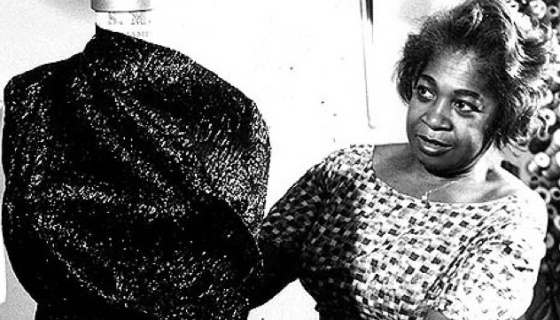

Good Morning POU!
Zelda Barbour Wynn Valdes (June 28, 1901 – September 26, 2001) was an American fashion designer and costumer. She is credited for designing the original Playboy Bunny waitress costumes.

Zelda Valdes was born Zelda Christian Barbour in Chambersburg, Pennsylvania, and grew up in Charlotte, North Carolina. She trained as a classical pianist at the Catholic Conservatory of Music. In the early 1920s, Valdes started to work in the tailoring shop of her uncle in White Plains, New York. Around the same time, Valdes began working as a stock girl at a high-end boutique. Eventually, she worked her way up to selling and making alterations, becoming the shop’s first black salesclerk and tailor. Looking back, Valdes said “It wasn’t a pleasant time, but the idea was to see what I could do.” Despite the struggles she experienced in her early experiences in the alteration industry, Valdes and her sister, Chez Valdes, opened the first African American owned Manhattan boutique in 1948.


Joyce Bryant wearing signature looks from Zelda Valdes
Beginning in 1935, she had her own dressmaking business in White Plains, New York. She eventually oversaw ladies alterations and developed her own dressmaking clientele. In 1948, Valdes opened “Zelda Wynn,” her design and dressmaking studio, on Broadway (in what is now Washington Heights on Broadway and West 158th Street). Valdes said that her shop was the first black-owned business on Broadway. She sold her dresses to movie star Dorothy Dandridge, opera diva Jessye Norman, and singer Gladys Knight. Valdes also dressed the entire bridal party for the 1948 wedding of Marie Ellington, aka Maria Cole and Nat King Cole. Additional celebrity clients included Josephine Baker, Mae West, Ella Fitzgerald, Eartha Kitt, and Marian Anderson, Constance Bennet, Diahann Carroll, Ruby Dee, Aretha Franklin, and Gladys Knight. Her designing relationship with Fitzgerald was mostly long-distance – she told The New York Times in 1994 that she only fitted Fitzgerald once in 12 years and did most of her designing for her based on her imagination. Valdes also created a new sexier image for singer Joyce Bryant who LIFE Magazine dubbed “the Black Marilyn Monroe.” Wynn’s contribution to Bryant’s rebranding was integral to the success of the singer’s career. Whereas before Bryant was known to wear ‘sweet’ dresses to accompany her ‘sweet’ songs, Zelda’s suggestion to dress Bryant in more formfitting gowns that complimented her curves, helped in establishing Bryant as a global talent.


Her extensive clientele coupled to her involvement as president of the National Association of Fashion and Accessory Designers in 1949, bolstered her career. The organization, jointly founded by Mary McLeod Butane, was made up of Black designers who were dedicated to providing opportunities for networking, professional development, and funding young designers and their endeavors. There was also a focus on bridging the divide between the black fashion world and the mainstream fashion industry. In the 1950s, she moved “Chez Zelda” to 151 57th Street in Midtown. She had a staff of nine dressmakers and charged almost $1,000 per couture gown. Overall, Wynn was widely known to create dresses that accentuated curves whilst delivering a look of powerful femininity. She famously claimed, “I just had a God- given talent for making people beautiful” in an interview with the New York Times in 1994.

Wynn’s reputed formfitting gowns that featured an hourglass figure, low necklines and tight waists was well suited to the concept for the Bunny suit. Her role in glamorizing women caught the attention of Playboy’s Hugh Hefner who commissioned Zelda to design bunny costumes for the Playboy Playmates, an idea suggested by Victor Lownes. She created the original Playboy Bunny costume, which was presented at the opening of the first Playboy Club in Chicago, IL on February 29, 1960. It was also the first commercial uniform to be registered by the United States Patent and Trademark Office.
In 1970, Arthur Mitchell asked Valdes to design costumes for his new company, the Dance Theatre of Harlem. She closed her business in 1989 but continued to work with the Dance Theatre of Harlem until her death in 2001 at the age of 100. During her time at the Dance Theatre of Harlem, she worked on a total of 82 ballets productions in over 22 countries until her death.

